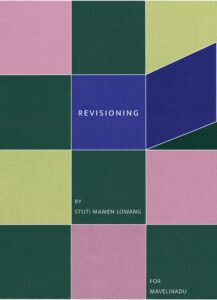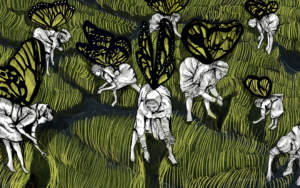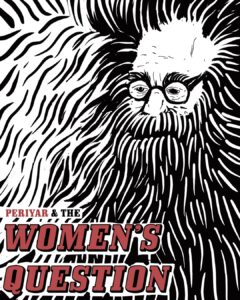“I didn’t launch the temple entry movement because I wanted the Depressed Classes to become worshipers of idols which they were prevented from worshiping or because I believed temple entry would make them equal members in and an integral part of the Hindu Society.” – Dr Ambedkar

Illustration by Ajinkya Dekhane
On this day in 1930, Dr Ambedkar led over 15,000 of his followers to the Kalaram Temple in Nashik to defy the social order and fight for the entry Dalits in Temples. It marked one of the most significant moments in Ambedkarite history as it paved the way for many temples opening entry to Dalits as a consequence and altering the social order of the time. During this time, Dr Ambedkar had embarked upon a series of movements to rebel against the caste structure of that time which had forbidden Dalits or Scheduled Castes from drinking water in public places, entering Hindu places of worship and being denied of their rights in scriptures such as Manusmriti.
In 1927, he had launched the Mahad Satyagraha to provide access to drinking water for Dalits, which was met with staunch opposition from the orthodox Hindus. When a rumour spread that the Depressed Classes in Mahad were attempting to enter the Vireshwar Temple, the local upper-caste Hindus came out armed with sticks to stop the procession and attack them. In the same year, he also made an effort to start the Ambadevi Mandir Satyagraha with the aim of providing Dalits the right to enter the Ambadevi Temple in Amravati. Prior to this, the Dalits had twice submitted an appeal to the Temple Committee to allow Dalits to enter the temple, but to no avail.
On 27th June 1927, Dr Ambedkar and his followers marched on Ambadevi Temple for their right to enter the religious premise. However despite their steady resolve, their protest did not result in victory after the upper-caste Hindus opposed their entry. In 1929, he began another protest for Dalits’ temple entry called the Parvati Satyagraha. The name came into being as the temple was located atop a hill call Parvati Tekdi. Built by the Brahminical Peshwas, the temple would only be open to upper-castes for centuries. Yet again, letters were written to the body that was in-charge of the temple to permit entry to Dalits, only to be denied yet again.
In the absence of Dr Ambedkar, the Dalits who went on to protest their prohibition from the temple were attacked by stone pelting upper-castes. Bahasaheb was greatly distraught by this violence against the depressed classes, wrote that the untouchables had been deserted by the caste Hindus, with several Dalits quitting the movement. Despite his multiple attempts at writing petitions, letters and complaints to allow Dalits to enter temples, while also promoting the issue of untouchability in temples in his newspaper Bahishkrut Bharat to garner widespread attention, the movement’s aim had not been fulfilled.
Finally on the 2nd of March in 1930, Dr Ambedkar began marching towards Kalaram Temple in Panchavati, Nashik with thousands of followers by his side. The name Kalaram was derived from the black idol of Ram in the temple. By the 3rd of March, over 15,000 protestors had arrived on Babasaheb’s call and began protesting around the premises of the temple. They faced stiff resistance and provocation from the caste Hindus but the protest remained peaceful at Dr Ambedkar’s orders. The police had to impose a Section 144 order to prohibit protests multiple times due to the hostility shown towards the Dalit protesters.
Dr Ambedkar would have to leave the premises from time to time to fulfil his other obligations such as the Round Table Meetings, however his supporters remained determined to gain entry to the temple. Dr Ambedkar’s friends and associates such as Bhaurao Gaikwad, Amritrao Rankhambe, Patitpawandas and P.N. Rajbhoj all contributed to the Kalaram movement in his absence as the protest would continue till 1933. After the court ruled against the Dalits in their appeal to be allowed entry in temples, Dr Ambedkar was against the idea of pursuing the cause of temple entry again and asked his followers to focus on bigger priorities such as education and politics.
In a letter to Bhaurao Gaikwad in 1934, he wrote, “This may appear strange and surprising coming as it does from one who was the author of the Satyagraha. But I am afraid to declare this change of front. I didn’t launch the temple entry movement because I wanted the Depressed Classes to become worshipers of idols which they were prevented from worshiping or because I believed temple entry would make them equal members in and an integral part of the Hindu Society. So far as this aspect of the case is concerned I would advise the Depressed Classes to insist upon a complete overhauling of Hindu Society and Hindu theology before they consent to become an integral part of Hindu Society.
I started temple entry Satyagraha only because I felt that was the best way of energizing the Depressed Classes and making them conscious of their position. As I believe I have achieved that purpose I have no more use for temple entry. I want the Depressed Classes to concentrate their energy and resource on politics and education and I hope that they will realise the importance of both.”




